Buttweld Fittings are normally used for pipe sizes 2″ and above. In ASME B16.9, Long Radius Elbows, 3D Bends, Straight Tees and Crosses, Reducing Tees and Crosses, Caps and Reducers are available upto 48″. In ASME B16.9, Short radius elbows, Long Radius Returns, Short Radius Returns, Lap joint stub ends are available upto 24″ They are Factory Made Wrought Steel Fittings. (Worked).
Tags : #Piping_Engineering #Piping_Fittings #Buttweld_Fittings
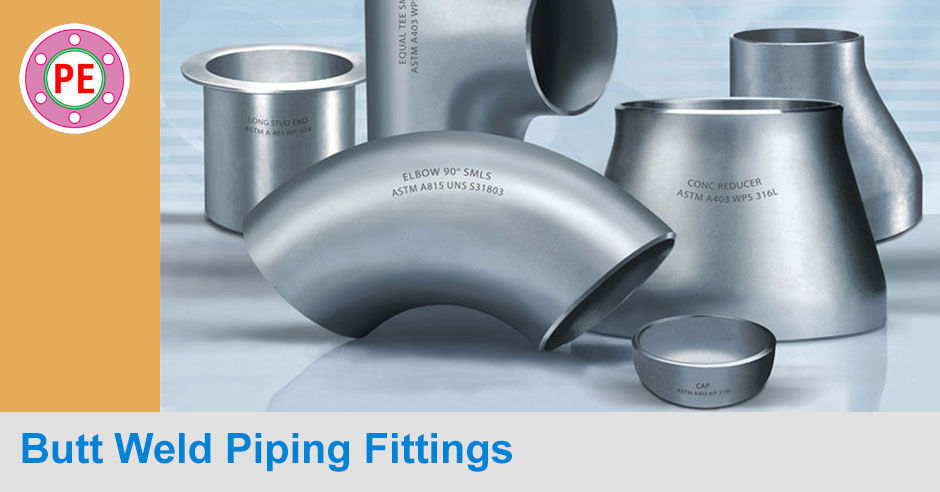
Dimensional Standards
- ASME B16.9 : Factory-Made Wrought Butt welding Fittings.
- MSS-SP-97 : Integrally Reinforced Forged Branch Outlet Fittings – Socket Welding, Threaded, and Butt welding Ends
Available Fittings
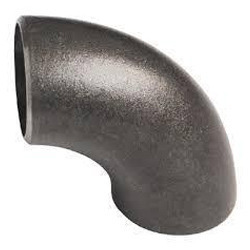 Butt weld long radius 90 degree elbow is used for 90 degree turn on piping in butt weld piping system. Long radius elbows are preferred due to their low pressure drop. They can also be cut at lesser degree if required in piping layout. Their centerline radius is 1.5 times the nominal pipe diameter. 90-Degree elbows with a straight extension at one end (long tangent) are still available in STD weight if required.
Butt weld long radius 90 degree elbow is used for 90 degree turn on piping in butt weld piping system. Long radius elbows are preferred due to their low pressure drop. They can also be cut at lesser degree if required in piping layout. Their centerline radius is 1.5 times the nominal pipe diameter. 90-Degree elbows with a straight extension at one end (long tangent) are still available in STD weight if required.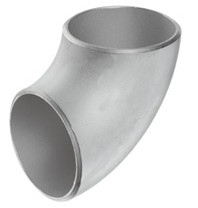 Butt weld short radius 90 degree elbows are used where space is limited. They are available only in 90 degrees but they can be cut to lesser degree if required as per piping layout. Centerline radius of short radius elbows is same as its nominal pipe diameter.
Butt weld short radius 90 degree elbows are used where space is limited. They are available only in 90 degrees but they can be cut to lesser degree if required as per piping layout. Centerline radius of short radius elbows is same as its nominal pipe diameter.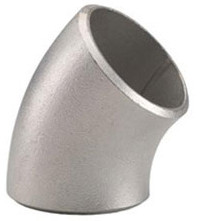 Butt weld long radius 45 degree elbow is used for 45 degree turn on piping in butt weld piping system. Long radius elbows are preferred due to their low pressure drop. They can also be cut at lesser degree if required in piping layout. Their centerline radius is 1.5 times the nominal pipe diameter. Only long radius 45 degree elbows are available.
Butt weld long radius 45 degree elbow is used for 45 degree turn on piping in butt weld piping system. Long radius elbows are preferred due to their low pressure drop. They can also be cut at lesser degree if required in piping layout. Their centerline radius is 1.5 times the nominal pipe diameter. Only long radius 45 degree elbows are available.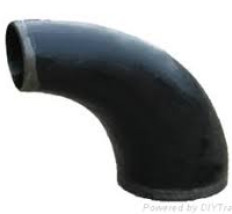 Only long radius reducing elbows are available. They are sparingly used where there is a space constraint. Normally a straight elbow with butt weld reducer is used.
Only long radius reducing elbows are available. They are sparingly used where there is a space constraint. Normally a straight elbow with butt weld reducer is used.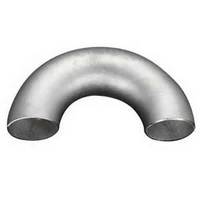 180 degree returns are used to construct heating coils, vents on tanks etc. Long radius returns provide minimum pressure drop.
180 degree returns are used to construct heating coils, vents on tanks etc. Long radius returns provide minimum pressure drop.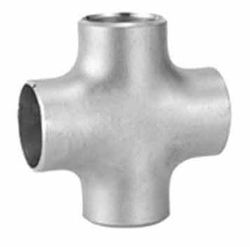 For economy, availability and to minimize the number of items in inventory, it is preferred to use tees etc. and not crosses except where space is restricted, as in marine piping or revamp work.
For economy, availability and to minimize the number of items in inventory, it is preferred to use tees etc. and not crosses except where space is restricted, as in marine piping or revamp work.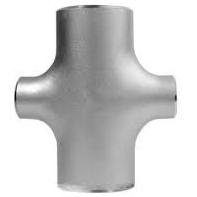 For economy, availability and to minimize the number of items in inventory, it is preferred to use tees etc. and not crosses except where space is restricted, as in marine piping or revamp work.
For economy, availability and to minimize the number of items in inventory, it is preferred to use tees etc. and not crosses except where space is restricted, as in marine piping or revamp work.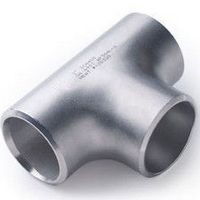 Butt weld straight tees are used for branch connection of same size that of header. These are one of the widely used butt welding fittings.
Butt weld straight tees are used for branch connection of same size that of header. These are one of the widely used butt welding fittings.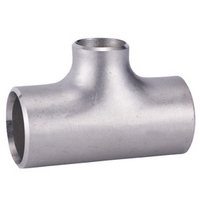 Butt weld reducing tees are used for branch connection of of smaller size than that of header. These are one of the widely used butt welding fittings.
Butt weld reducing tees are used for branch connection of of smaller size than that of header. These are one of the widely used butt welding fittings.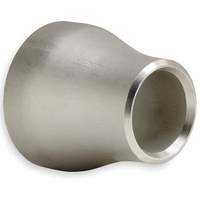 These are used preferably in vertical piping. Placing them in horizontal piping changes elevation of piping which can be detrimental. These are normally avoided to reduce inventory and eccentric reducers are used as much as possible.
These are used preferably in vertical piping. Placing them in horizontal piping changes elevation of piping which can be detrimental. These are normally avoided to reduce inventory and eccentric reducers are used as much as possible.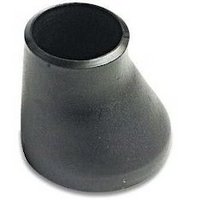 These are mostly used in place of concentric reducers as they keep bottom of pipe unchanged in horizontal piping. To reduce inventory, eccentric reducers are preferred in place of concentric reducers.
These are mostly used in place of concentric reducers as they keep bottom of pipe unchanged in horizontal piping. To reduce inventory, eccentric reducers are preferred in place of concentric reducers.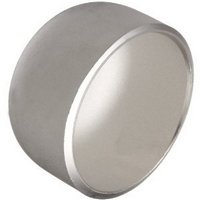 These are used to close the pipe ends on pipe racks. Are also used at the bottom of condensate drip legs. Holes can be drilled on their head and drain connections can be added in case if drip legs.
These are used to close the pipe ends on pipe racks. Are also used at the bottom of condensate drip legs. Holes can be drilled on their head and drain connections can be added in case if drip legs.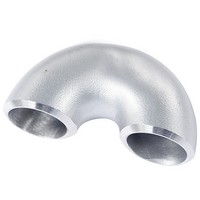 180 degree returns are used to construct heating coils, vents on tanks etc. Long radius returns provide minimum pressure drop.
180 degree returns are used to construct heating coils, vents on tanks etc. Long radius returns provide minimum pressure drop.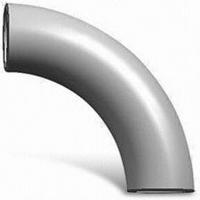 Bends are made from straight pipe. Common bending radii are 3 and 5 times the pipe size (3R and 5R bends, where R=Nominal Pipe Size – nominal diameter – not radius). 3R bends are available from stock. Larger bends can be custom made, preferably by hot bending. Only seamless or electric-resistance-welded pipe is suitable for bending.
Bends are made from straight pipe. Common bending radii are 3 and 5 times the pipe size (3R and 5R bends, where R=Nominal Pipe Size – nominal diameter – not radius). 3R bends are available from stock. Larger bends can be custom made, preferably by hot bending. Only seamless or electric-resistance-welded pipe is suitable for bending.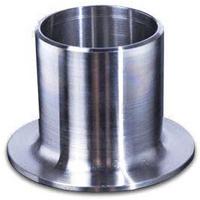 These are used when piping is made of a costly material such as stainless steel. Thick flange slips on this stub end. Flange can be made of a cheaper material like carbon steel.
These are used when piping is made of a costly material such as stainless steel. Thick flange slips on this stub end. Flange can be made of a cheaper material like carbon steel.Stub Ins
Stub in is a term for a branch pipe welded directly into the side of the main pipe run – it is not a fitting. This is the commonest and least expensive method of welding a full-size or reducing branch for pipe 2-inch and larger. A stub-in can be reinforced.
Flat Closures
Flat closures are normally cut from the plate stock by the fabricator or the erector.
Reducing Laterals
Reducing laterals are ordered similarly to butt-welding tees, except that the angle between branch and run is also stated.
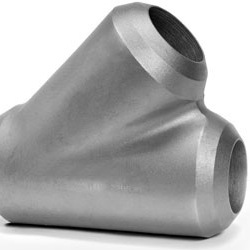
Materials of Construction
Typical materials of construction for butt welding fittings are as follows :
- ASTM A234 Gr. WPB : Carbon Steel for Intermediate Temperature : -30 deg. C to 430 deg. C : Piping Fittings of Wrought Carbon Steel and Alloy Steel for Moderate and High Temperature Service.
- ASTM A234 Gr. WP11,WP12, WP22 :430 deg. C to 630 deg. C : Alloy Steel for elevated temperature.
- Elevated Temperatures Stainless Steel : 630 deg. C to 815 deg. C : Materia Used is : A403 WP304H, 316H, 327H, 312.
- A815 UNS S31803 : Duplex Stainless Steel :
- Cryogenic Temperatures Stainless Steel : -100 deg. C to -250 deg. C : A403 Gr. 304, 304L, 316, 316L etc.
- Low Temperature Carbon Steel : -30 deg. C to -100 deg. C : ASTM A420 WPL6
Advantages of Butt Weld Fittings
- They have smooth inner surface and offer gradual direction change with minimum turbulence.
- They require much less space for constructing and hanging the pipe system.
- Most practical way of reliable, leak-proof joints.
- They are almost maintenance free.
- They have a higher temperature and pressure limit.
- They form a self-contained system.
- They are easy to insulate.
- They offer uniform wall thickness throughout the system.
Disadvantages of Butt Weld Fittings
- They are not easy to dismantle. It is often advisable to provide the system with enough flanged joints so that it can be broken down at intervals.
- Intruding weld metal may affect flow.
Sample Piping Material Specification
Elements :
45 Degree Elbow, 90 Degree Elbow, Equal Tee, Reducing Tee, Cap, Reducers.
Material :
CS : ASTM A234 Gr. WPB for Seamless, Gr. WPBW for Welded.
SS: ASTM A403 Gr. WP304L-S for Seamles and WP304L-W for Welded.
316L : ASTM A403 Gr. WP316L-S
Construction :
CS : Seamless upto 24”. Welded above 24”. Not applicable for Caps
SS: Seamless upto 6”. Welded above 6”.
Ends :
Butt Weld Ends
Heat Treatment :
Yes for Welded Tees
Thickness :
As per matching pipe thickness
Dimensional Standard :
ASME B16.9
